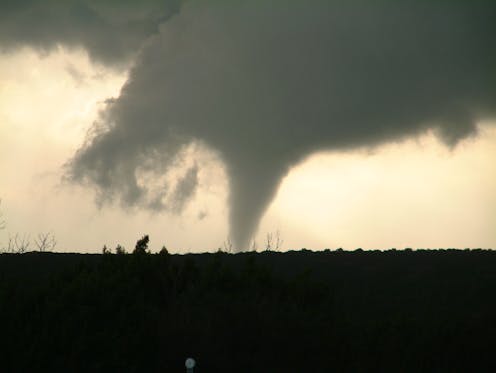What do tornadoes look like on the inside?
- Written by Jana Houser, Associate Professor of Geography, Ohio University

References
- ^ Curious Kids (theconversation.com)
- ^ curiouskidsus@theconversation.com (theconversation.com)
- ^ seek shelter when tornado conditions develop (www.cdc.gov)
- ^ mobile Doppler radars (www.nssl.noaa.gov)
- ^ centrifugal force (www.livescience.com)
- ^ spiral bands (mynasadata.larc.nasa.gov)
- ^ one main funnel cloud (en.wikipedia.org)
- ^ multiple small funnels (www.youtube.com)
- ^ don’t have a funnel cloud at all (www.spc.noaa.gov)
- ^ form at the ground (www.al.com)
- ^ CuriousKidsUS@theconversation.com (theconversation.com)
Authors: Jana Houser, Associate Professor of Geography, Ohio University
Read more https://theconversation.com/what-do-tornadoes-look-like-on-the-inside-179357



